Love them or loathe them, the end is nigh for Britain’s fleet of Pacer railbuses.
Built between 1980 and 1987 as a short-term, low-cost solution for British Rail’s crippling lack of rolling stock, the class 140, 141, 142, 143 and 144 trains were born straight out of the playbook of Scrooge himself.
Intended to plug the gap before funds could be found for better trains, they were built on the cheap, featuring lightweight bus bodies bolted to 4-wheeled underframes, with a reinforced drivers cab plonked at each end to get around crashworthiness regulations.
Though their numbers are now pitifully small, around 140 of these perennial units were still in service at the beginning of 2019 – not bad for a what is essentially a bus welded to the underframe of a freight wagon, with an intended life span of only 20 years.
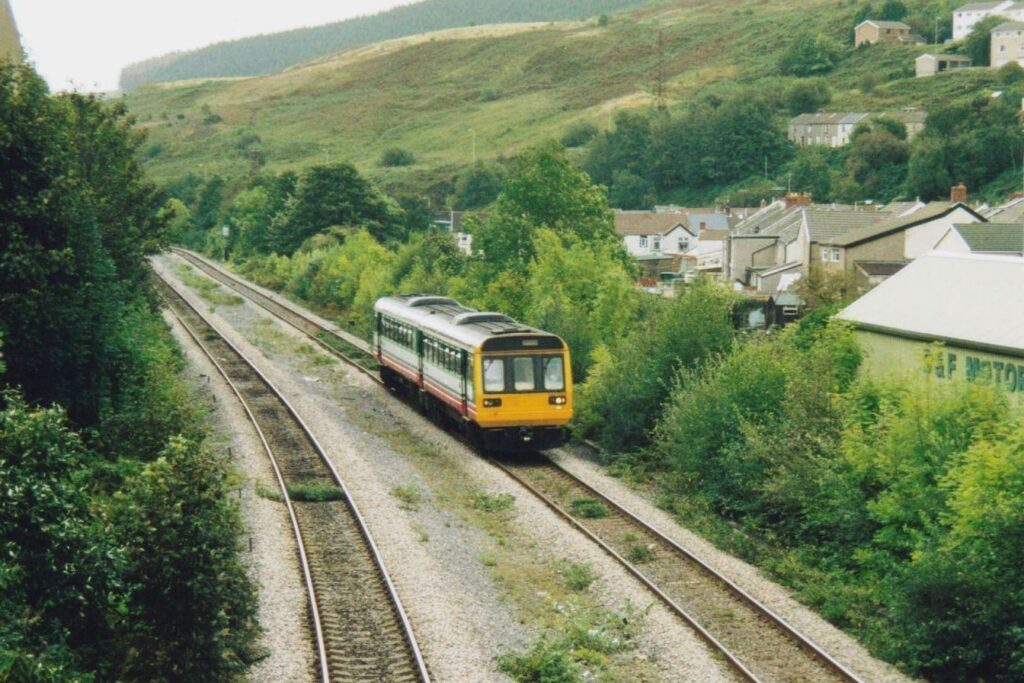
Throughout their illustrious history, Pacers have appeared in all manner of disguises, and we thought what better way to celebrate their achievements than with a pictorial history of every single Pacer livery, ever.
For clarity – as with our ode to the British Rail HSTs – we’re not including allover advertising paint-jobs, small amendments by rogue depot painters or temporary bastardisations – of which there have probably been hundreds.
Take a seat, grab yourself a coffee, and prepare to bounce around on our track-squealing, four-wheeled, lawnmower-engined tribute to Britain’s ‘nodding donkeys’.
British Rail blue and grey
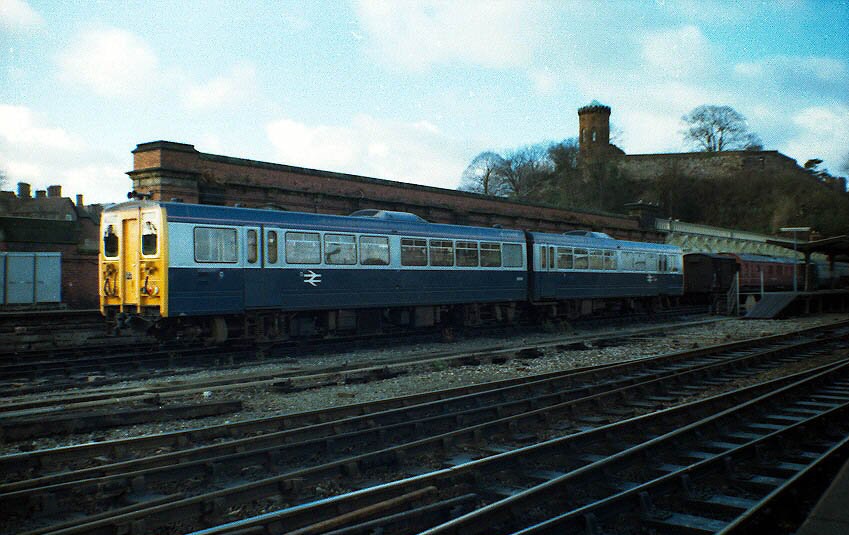
Kicking off the line of Pacers was the rather miserable-looking Class 140 prototype, 140001. It was to be the sole member of its class; a mutant of epic proportions born out of an argument amongst BR boffins that it should perform in crashworthiness tests like a Southern Region EMU, but be built entirely out of Leyland National bus parts. Neither side won the argument, resulting in this truly grotesque creation coming to life. It spent its entire working life in BR blue and grey livery.
West Yorkshire ‘MetroTrain’ verona and cream
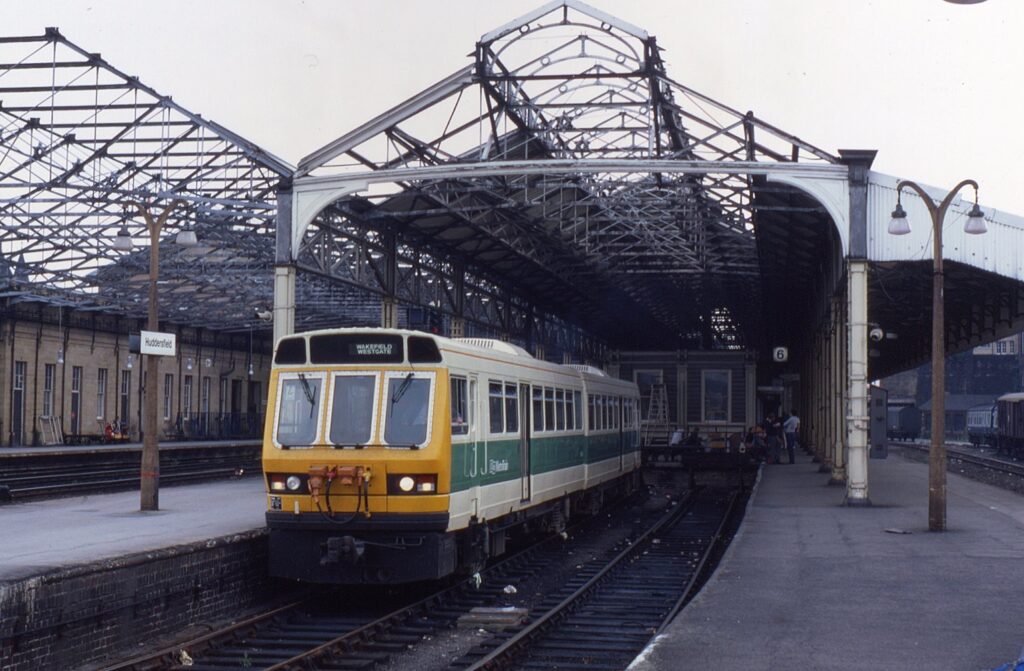
The British Leyland-built Class 141s were the first production ‘Pacers’ to hit the rails after the bodge-job that was the Class 140. More refined in terms of looks (sort of) than the prototype Class 140, 20 sets of these units were built in 1984 and worked for almost all of their lives on West Yorkshire routes radiating from Leeds. The 141s featured a pair of centrally positioned doors on each trailer, and were initially delivered in West Yorkshire’s ‘verona and cream’ livery.
West Yorkshire red and cream
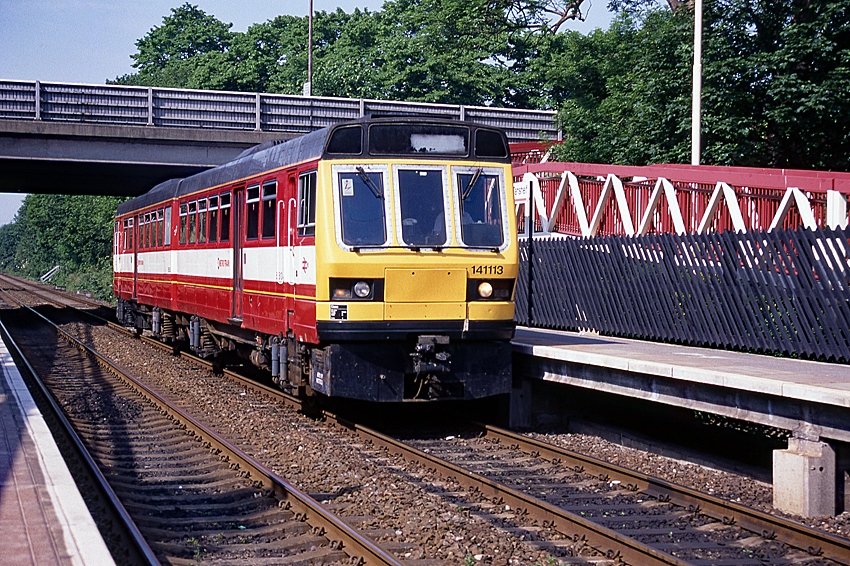
Unfortunately, the Class 141s became known for their catastrophic reliability problems, and all 20 sets were refurbished by Hunslet-Barclay between 1988 and 1989. At the same time, they gained WYPTE’s red and cream ‘Metro Train’ livery, which they carried until their demise in 1997. A later version of this livery would be applied to West Yorkshire’s 144s, with a narrower strip of cream (as seen here) – and some even carried Regional Railways branding on this variant, too. Many thanks to Lee Render for pointing out this omission!
BR Provincial Sector blue
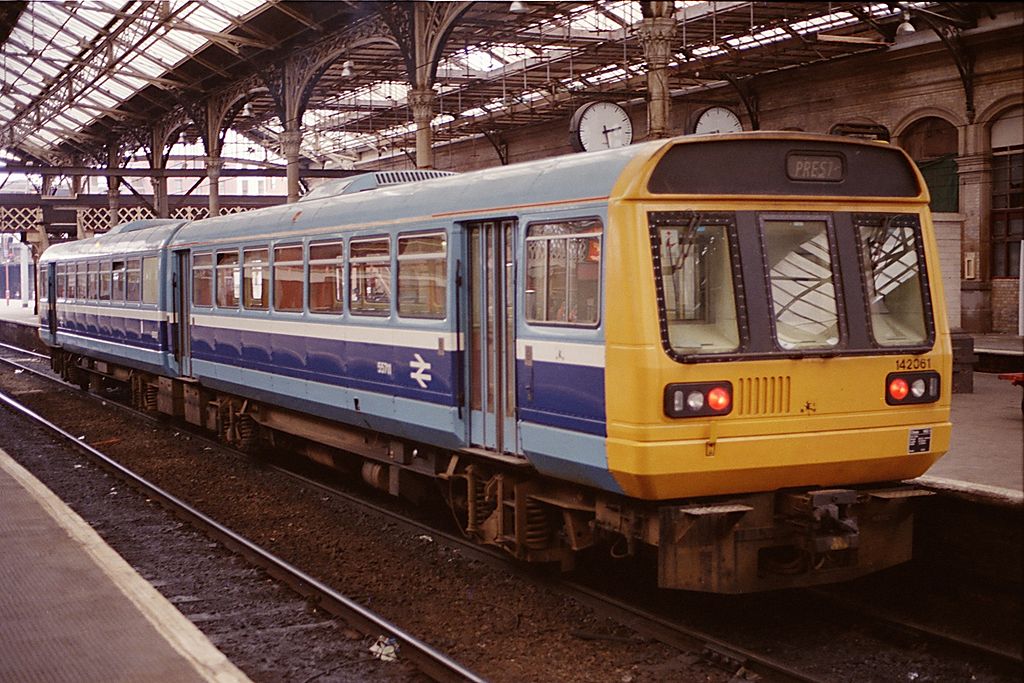
The Leyland National-derived Class 142s were delivered from new in BR ‘Provincial’ livery apart from 142001-014, which were delivered in GMPTE orange and brown for services in the Manchester area, and 015-027, which became the Western Region’s ‘Skippers’. Some Provincial Pacers appeared with attractive ‘Network Northwest’ branding on top of Provincial blue.
GMPTE orange and brown
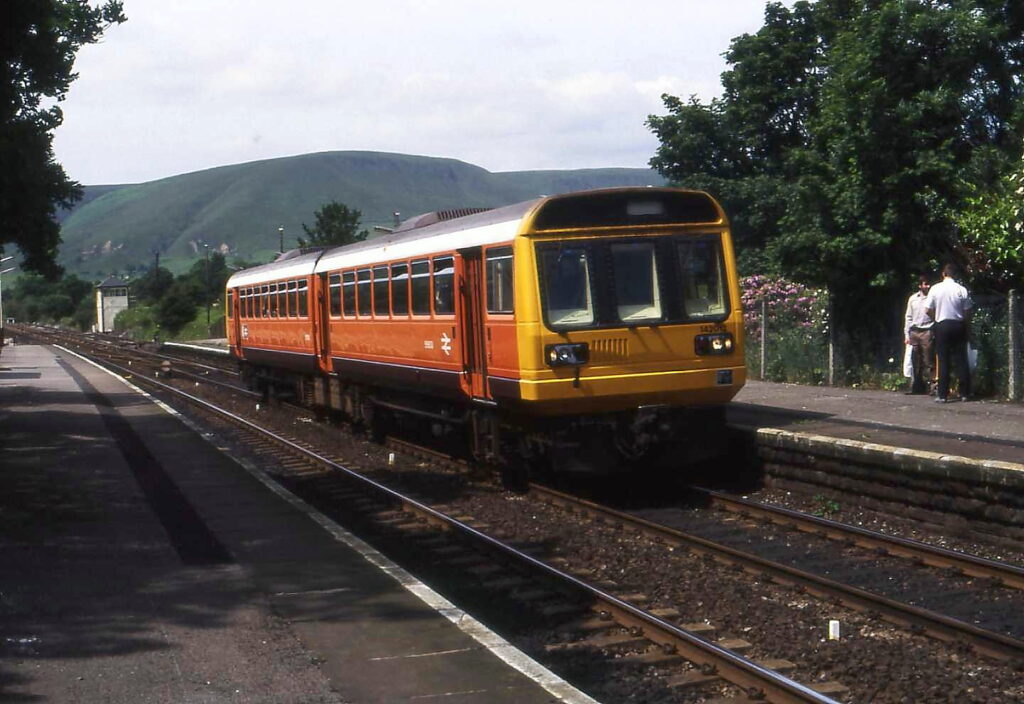
Perhaps one of the most attractive liveries ever worn by the Class 142 Pacers, 142001-142014 were delivered in GMPTE orange and brown. They carried this fetching livery until the mid 1990s.
Western Region Chocolate and Cream ‘Skipper’
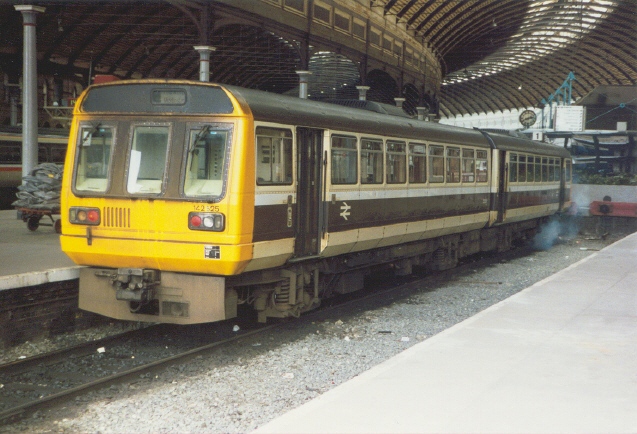
A small batch of 142s were delivered new to the Western Region. They wore this GWR-inspired Chocolate and Cream livery, and were named and marketed as ‘Skippers’. They didn’t last very long in the South West – all were consigned to the ‘skip’ (read, ‘transferred to the North of England’) shortly after.
Regional Railways blue and white
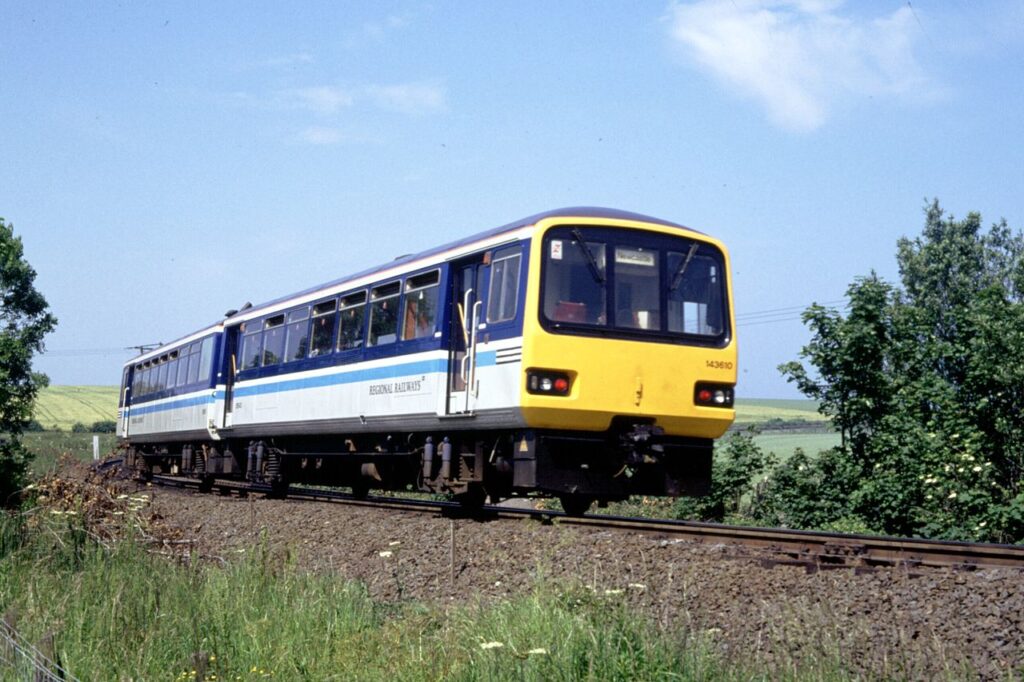
After Provincial came Regional Railways – and this two-tone blue and white striped livery for the Pacers. Regional Railways lasted until 1997, when it was replaced by the names of the privatised franchise operators. Many Pacers were still running in full RR livery with their new fleetnames several years later.
Regional Railways – North Western grey
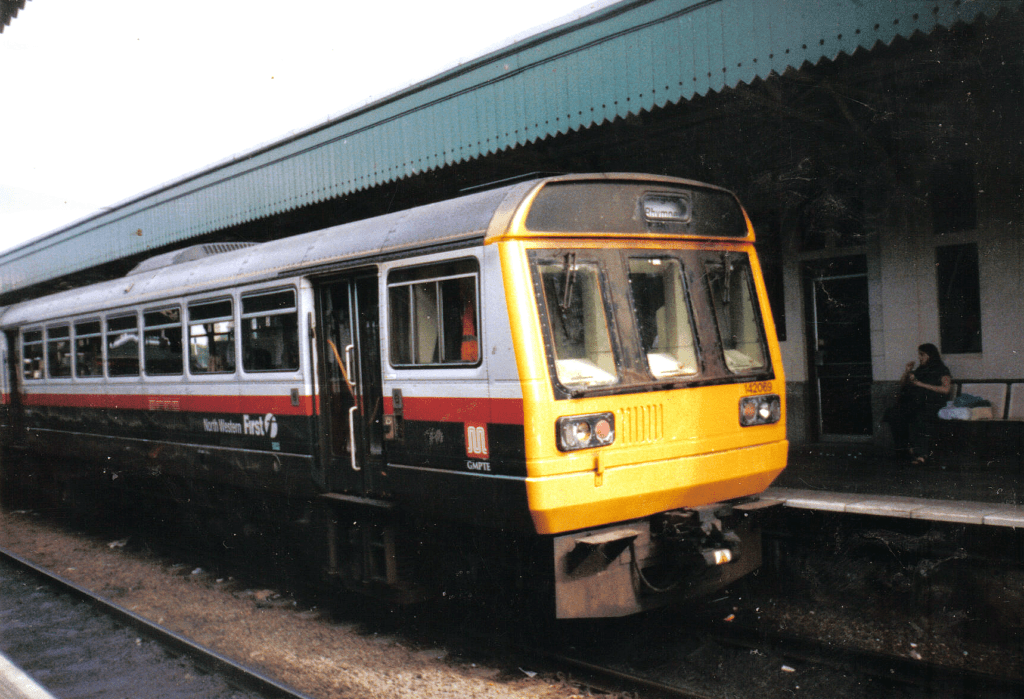
Pacers operating in the North West gained this grey and white-based Regional Railways / GMPTE hybrid livery (which later became that of North Western Trains and First North Western upon privatisation). This particularly livery did absolutely nothing for the Pacers but highlight how decrepit they were – and it stuck around for absolutely years and years.
Tyne and Wear yellow

Whilst Manchester’s Pacers were turning grey, Newcastle’s were turning a rather more brighter yellow. From 1991, Pacers in the North East began to appear in this yellow ochre-based livery featuring a light blue stripe separating the yellow from the white, complete with Tyne and Wear logos.
Merseyrail yellow (version 1)
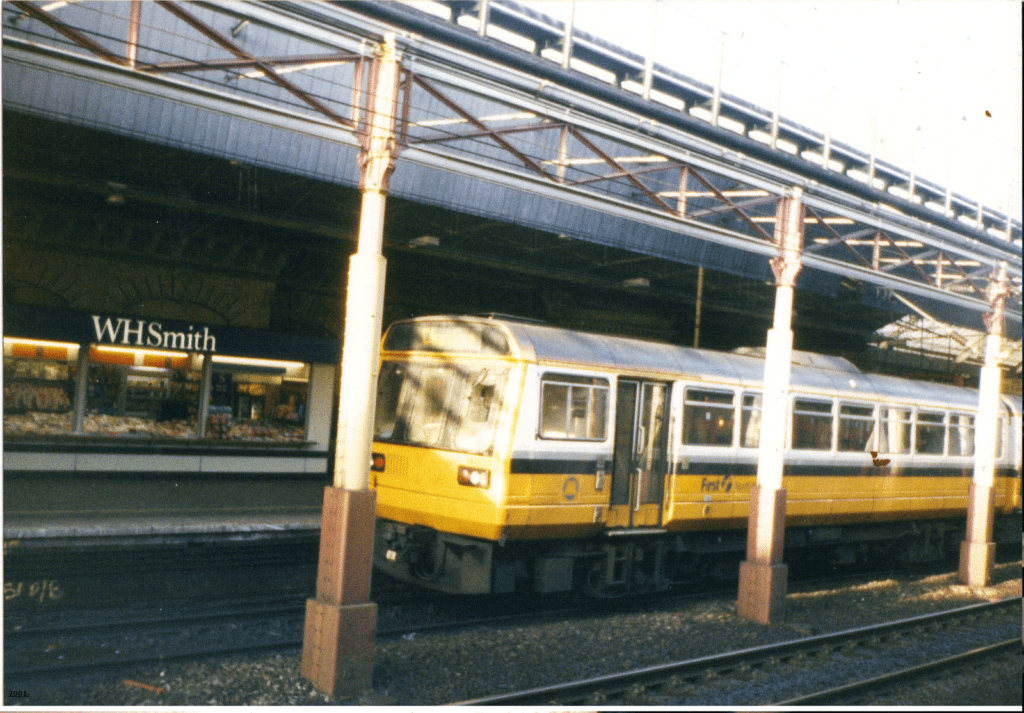
Not wanting to miss out on the PTE-area branding action, Merseyrail soon followed suit. They too arranged for their Pacers to be painted yellow, differing from those in the North East by featuring a black and grey stripe instead of blue. Merseyrail’s Pacers could be easily identified from the outside by their HUGE dot matrix destination displays.
Merseyrail yellow (version 2)
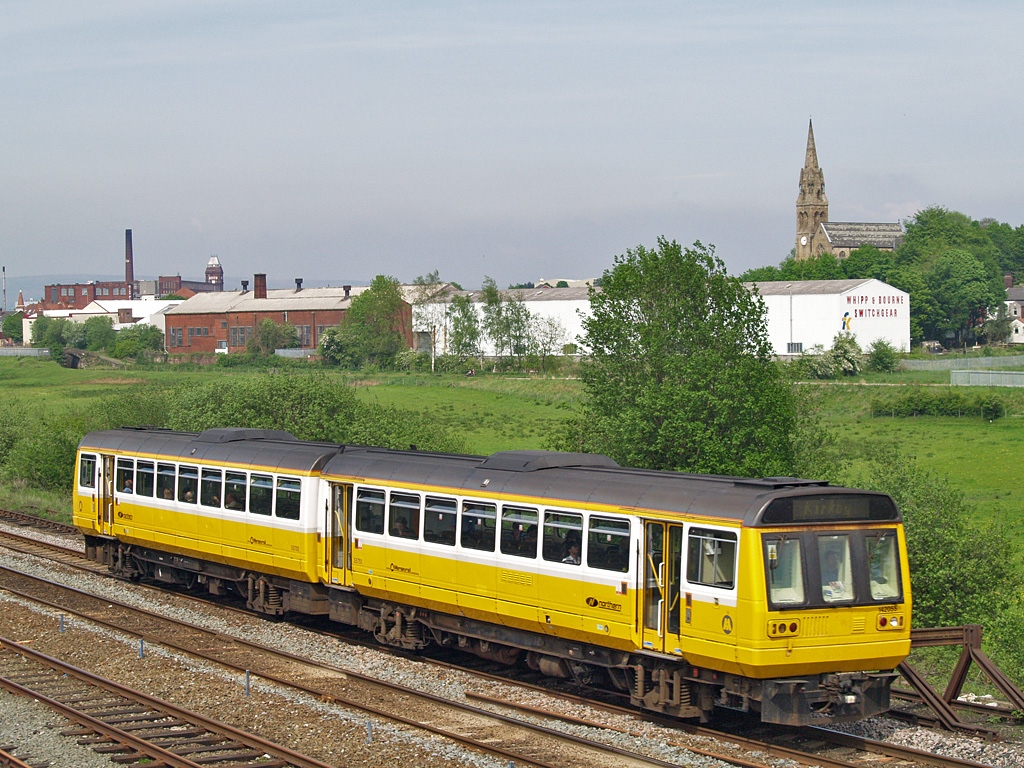
Later in life, Merseyrail’s Pacers were treated to a second, updated version of their yellow livery. This time, the black stripe was ditched, creating a slightly more modern look for their 142s.
Northern Spirit
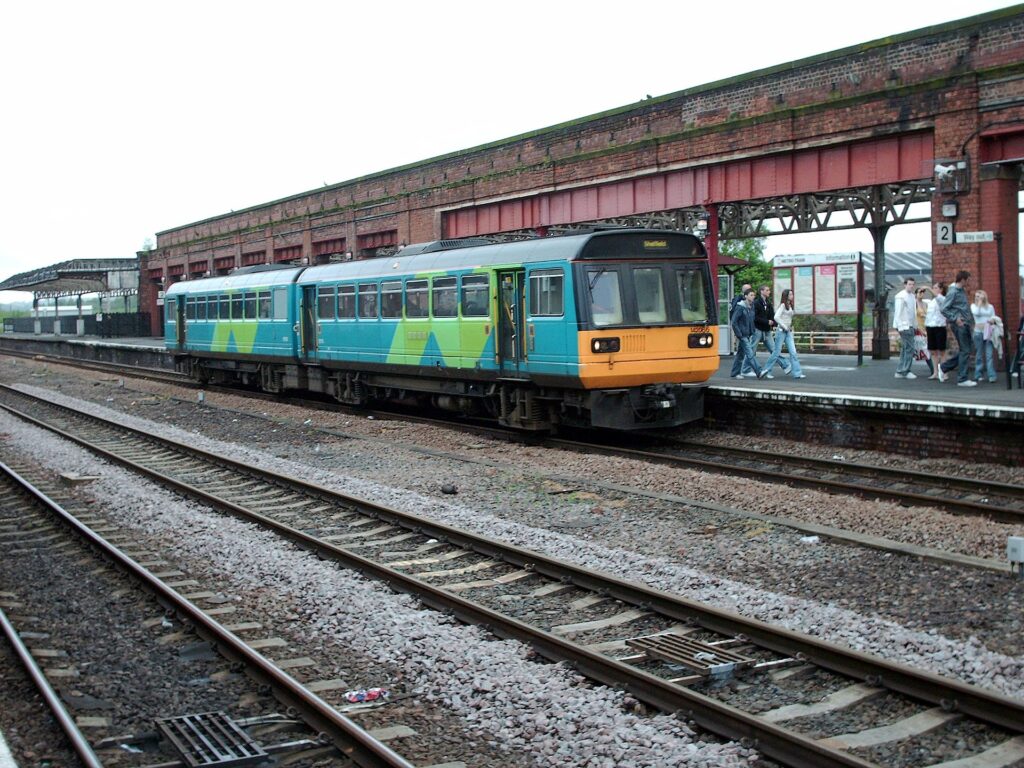
A strikingly attractive livery worn by the Pacers was that of Northern Spirit; later Arriva Trains Northern. It featured a large, lime green ‘N’ across the bodysides set against a backdrop of turquoise blue. Though the example in this picture is sadly quite down-at-heel, Northern Spirit in the early years was surely ‘Peak Pacer’.
North Western Trains
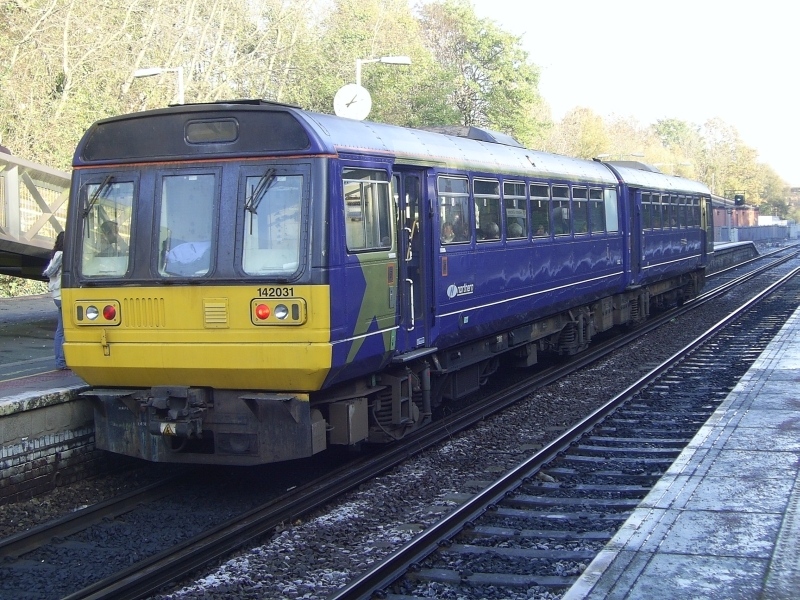
The North Western Trains name was rather short lived, by comparison to its successor, First North Western. However, a great many trains – including Pacers – did gain North Western’s smart royal blue livery featuring gold stars at each end of the train. Due to having leaf doors, the Pacers never gained the four gold stars across the doors a la the 150s and 323s, but they still looked rather fetching. Some ‘gold starred’ Pacers even made it through to Northern Rail’s tenure!
Valley Lines

A relatively under-appreciated livery is that of South Wales’ Valley Lines, which were later rebranded as Arriva Trains Wales. Many Welsh Pacers were kitted out in this attractive green, cream and red colour scheme.
Wessex Trains

Thank you to Joe Dunckley over on Twitter, who pointed out that we missed out Wessex Trains and their fleet of Pacers from this list. Here, 143620 wears an advert for the city of Bristol over the top of its base livery.
Arriva Trains Northern & Arriva Trains Wales
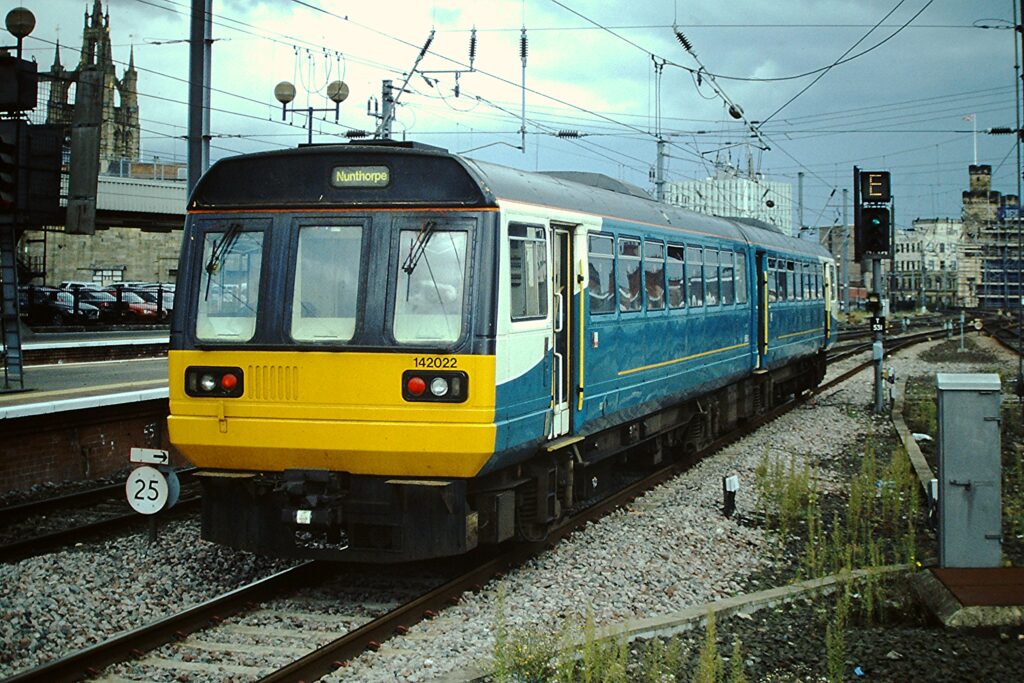
Sticking with Wales – and erm, Northern England – we have Arriva’s rail livery. In an effort to make their Pacers look even more like the buses they were derived from, Arriva began painting their trains into an adapted version of their turquoise and cream livery.
WY Metro ‘silvery blobs’
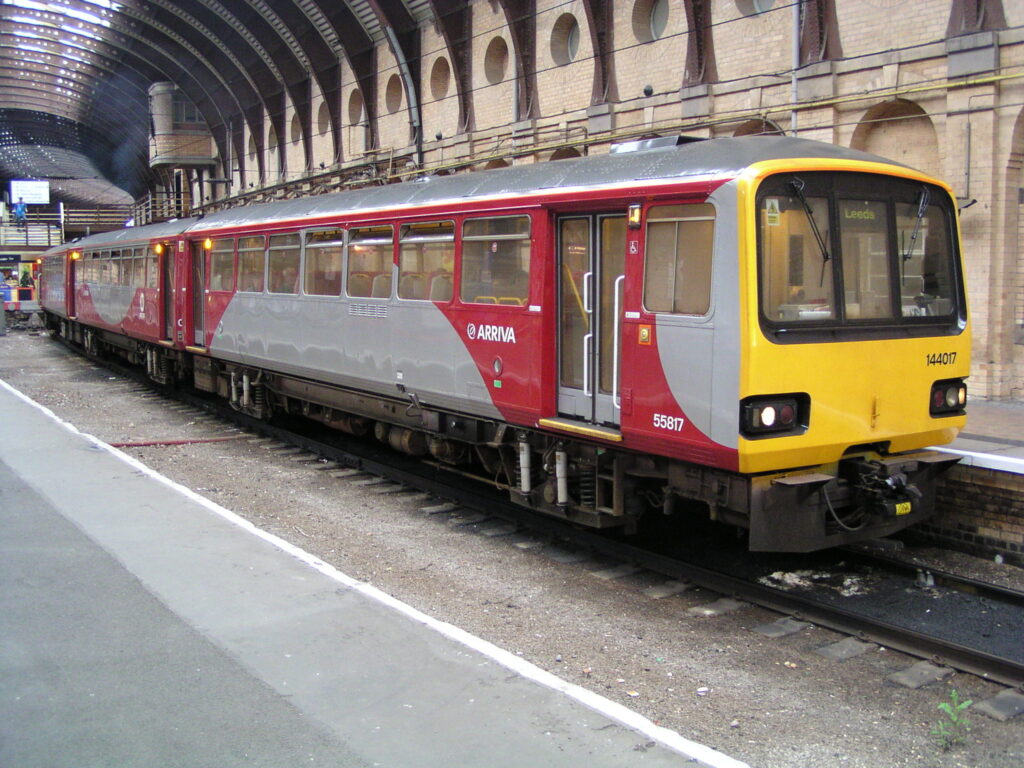
If there’s a technical name other than ‘silvery blobs’ for West Yorkshire’s MetroTrain branding, we haven’t come across it yet. West Yorkshire’s 143 and 144 units were given an overhaul featuring high backed seating and improved systems, as well as this revised MetroTrain livery. Early repaints into this livery featured a red ‘M’ symbol on the front of the train, which was for some reason fairly swiftly removed.
Northern Rail
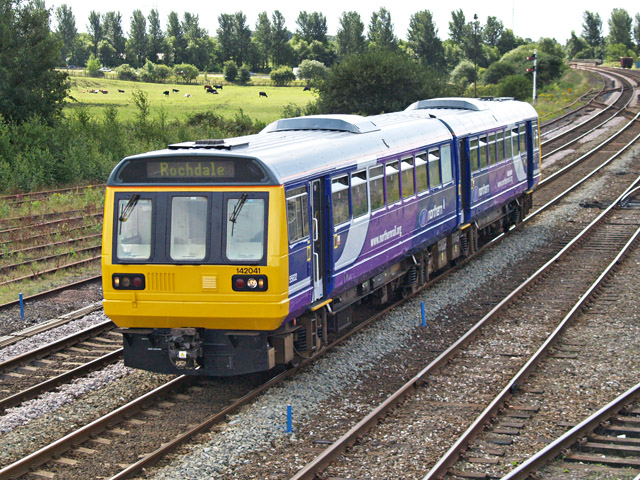
Once touted as ‘the hated British train which just won’t die’, nothing says ‘perennial’ quite like Northern Rail’s two-tone purple and white livery. The livery itself became almost a byword for mediocrity towards the end of Arriva’s grip on the franchise – and many, many Pacers have now gone to their graves wearing it. This livery is bound to live on for a good few years to come, as a handful of Pacers have now entered preservation wearing this colourscheme.
First Great Western purple
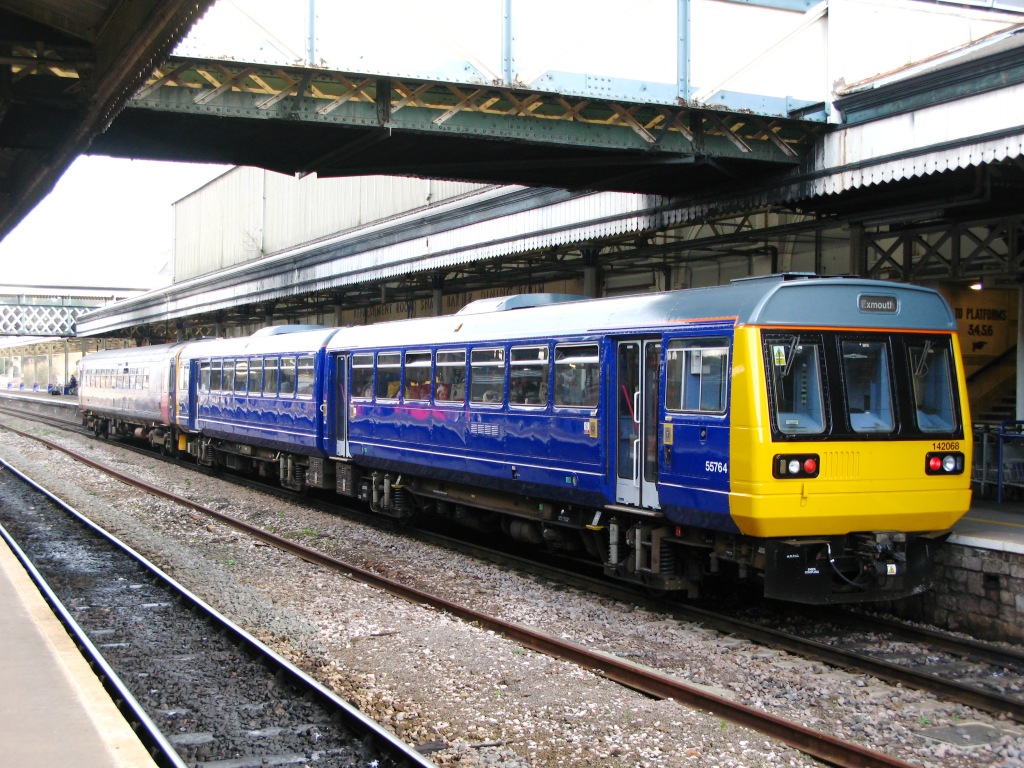
A handful of short-stayers were painted into First Great Western’s purple undercoat – some even going as far as having giant pink ‘F’s emblazoned on their bodysides. Presumably, FGW thought their loaned Pacers could do with a lick of paint, but weren’t worth shelling out the cash for vinyls. To be fair, we’ve seen worse-looking Pacers!
First Great Western purply lines
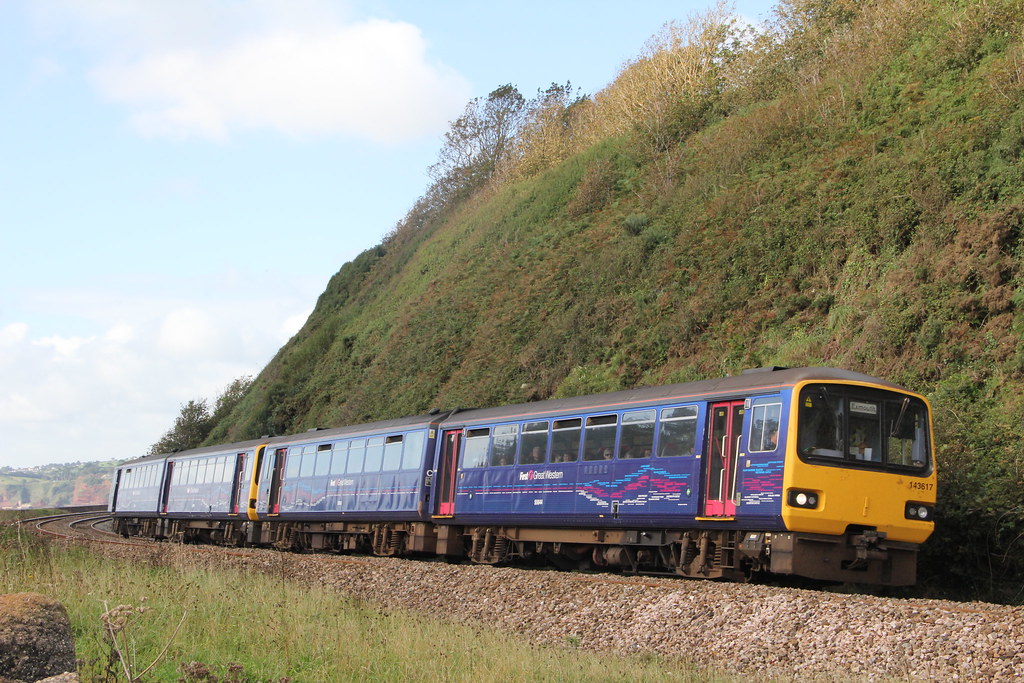
An adaptation of FGW’s ‘Dynamic Lines’ livery for a class of train which presumably First considered anything but ‘dynamic’. This adapted version featured place names from around the Great Western region making up a rehashed set of ‘lines’.
Arriva Trains Wales (version 2)

Now, here’s a classy livery for a Pacer. Looking resplendent , 143604 carries Arriva’s new two-tone turquoise livery for its operations in Wales. Clearly an attempt at painting a better image of the operator ahead of a franchise bid, it ultimately failed to win hearts and minds – though we can’t deny, this particular Pacer looks fantastic.
GWR
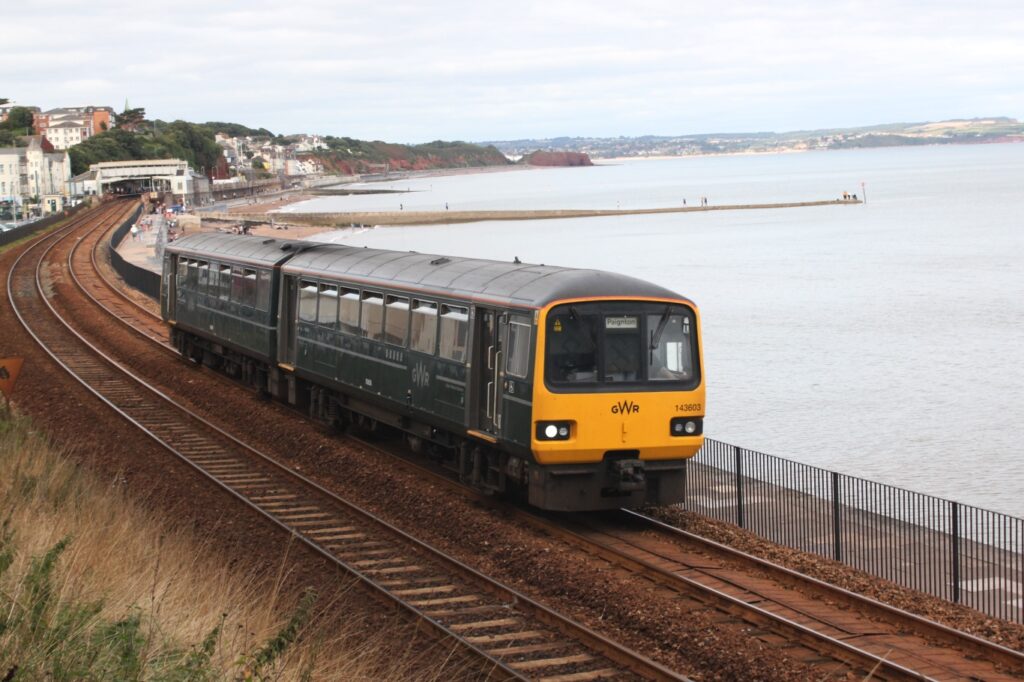
Proving once again that GWR’s deep green livery can polish even the most stubborn turd, some Pacers have clung onto life long enough to receive GWR’s new branding.
Pacer Evolution
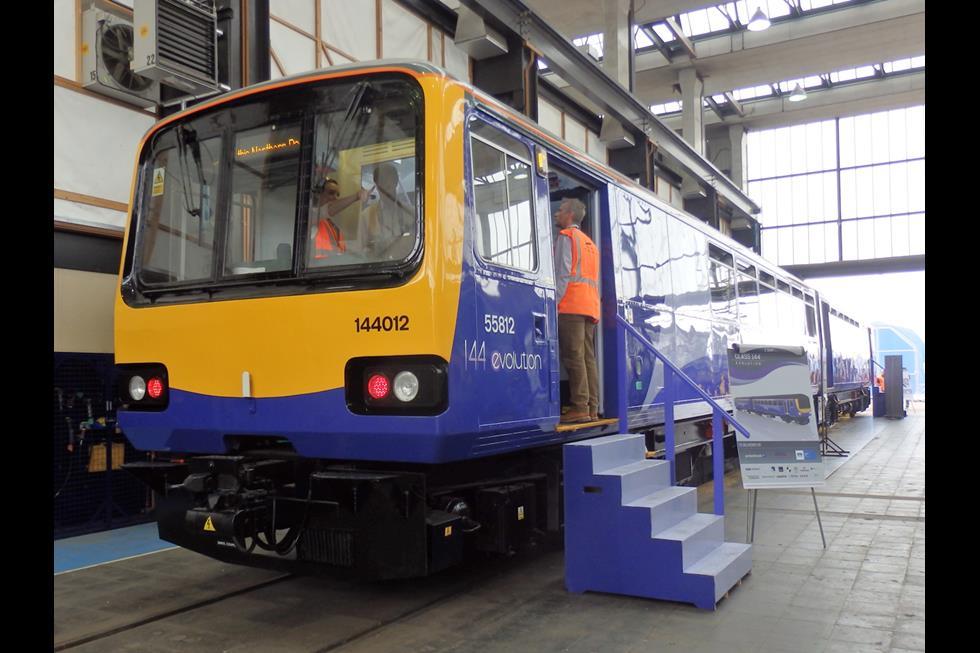
Though not technically a ‘livery’ per se, the Pacer Evolution warrants a mention at the end of this article because of what could have been. Determined to squeeze more life from its Pacers, Porterbrook overhauled a single 144 unit to modern standards, fitting new passenger information systems, and an accessible toilet to 144012. In the end, it proved to be a rather desperate ploy to showcase ‘what could be done’ in an attempt to keep Pacers on the rails – but ultimately, only one Pacer was ever kitted out in this fashion.
Did we miss any?
If you think there’s a livery missing from this list, let us know! Leave a message in the comments below, or tweet @transportdsn.

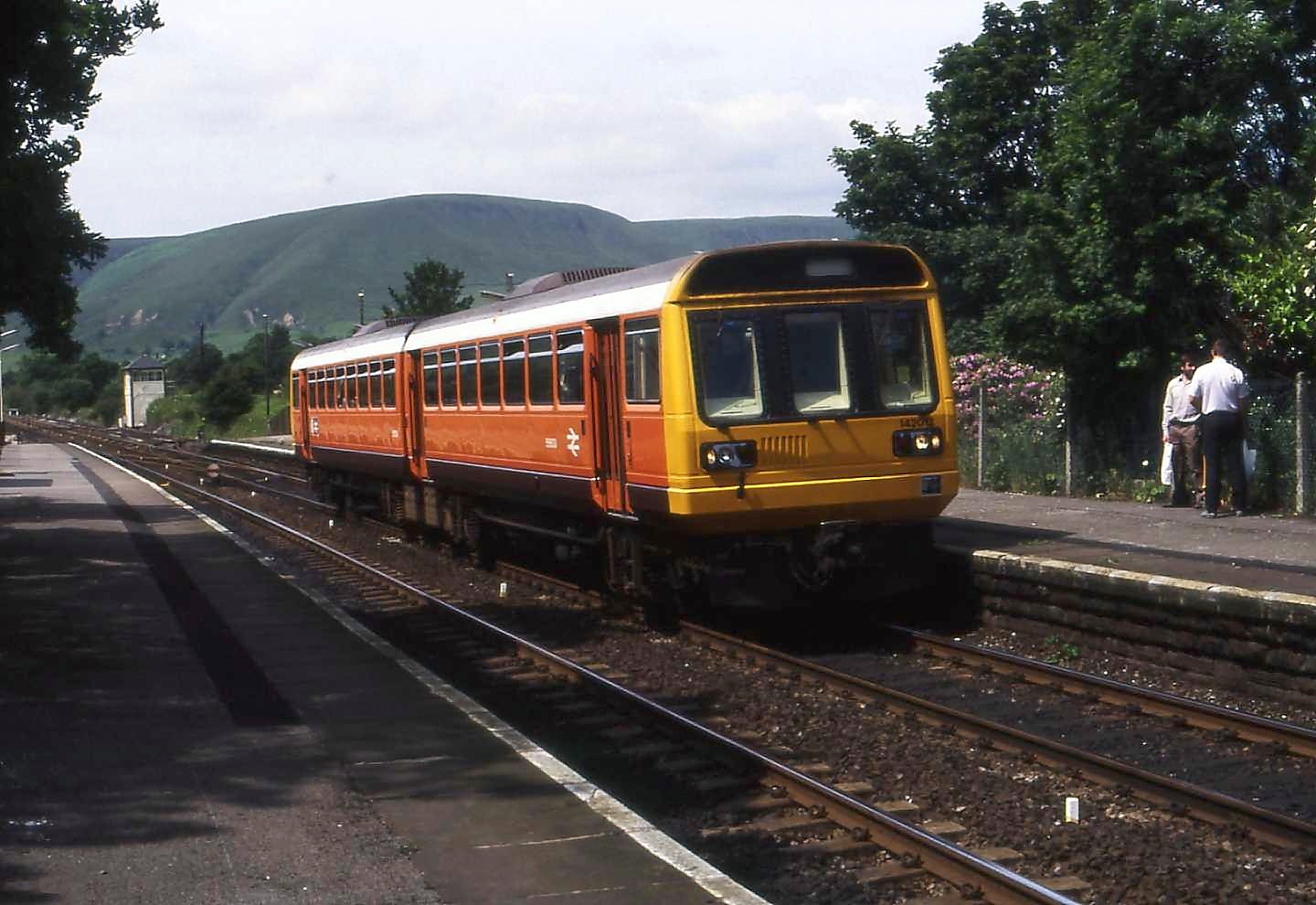


8 Responses
4.5
The first few 141’s for West Yorkshire PTE were delivered in blue and grey but may have been repainted in to Verona Green before entry in to service. I photographed 141003 at Neville Hill in blue in April 1984
Interesting, hadn’t realised that Ken! Any link to your photos? Thanks for the pointer!
http://www.scot-rail.co.uk/page/Class+141
https://www.pinterest.co.uk/pin/250372060522433288#imgViewer
https://www.pinterest.co.uk/pin/317081630020782685/
Yes the 20 anniversary of the Trevithick penydarren catch me who can livery – refreshments via trolley set ice served on board unit. I’m told anyone got a picture ?
Blue and grey 141s used Barrow Corporation blue not BR blue. Also the 140 was far from been a bodge, much more thought was put into this unit than the other classes and it sported a much better interior with the same seating as a SR EMU of the era. It was BRs cost cutting that lead to the watered down cheap classes that subsequently followed.
Yes the tyne&wear pte colours from 80s on .yellow skyblue/white stripe
The 80s ones look abit more orangey yellow ..tho in 90s they were more of a yellow and different logo was used after metropolitan counties were abolushed by Thatcher mid 80s https://www.flickr.com/photos/66289212@N07/34005458061
https://www.flickr.com/photos/66289212@N07/17056154147
https://www.flickr.com/photos/metromadme/8714553845